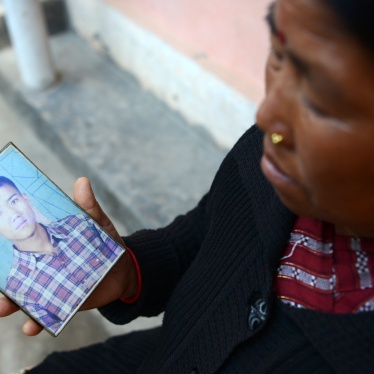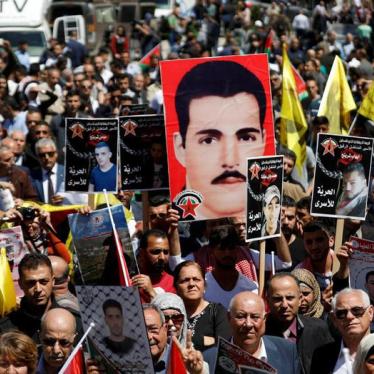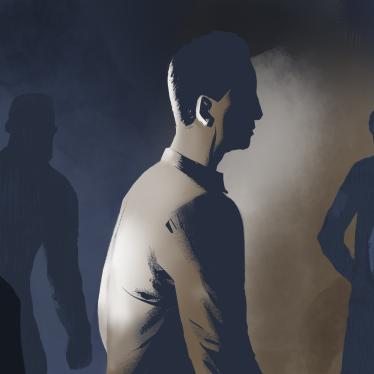On May 8, 2021, explosions targeting the Sayed ul-Shuhada school in Kabul killed 90 people, most of them girls from Afghanistan’s Shia Hazara community. The horrific attack confirmed the fears of many Afghans that, as the war intensifies and U.S. troops withdraw, there could be more such atrocities. How to prevent a catastrophic deterioration of the human rights situation is the critical question for U.S. policy in Afghanistan now.
Attacks like this are not new, though they have intensified in scale and frequency. Located in the impoverished Dasht-e Barchi neighborhood of Kabul, the school had no security, even though the area saw numerous attacks in recent years — many apparently carried out by the Afghan iteration of the Islamic State, but others unclaimed. In a similarly shocking incident a year ago, gunmen attacked the maternity wing of the Dasht-e Barchi hospital, killing 15 new mothers, among others. Who was responsible may never be known, since — incomprehensibly — the government has carried out no credible investigation.
With this attack it seemed that the Afghanistan war had crossed a new line in inhumanity. But it’s been a long war: 43 years of fighting, not just the 20 since the U.S.-led invasion after 9/11. Countless numbers of people have been killed and injured; millions have become refugees or internally displaced.
Just as armed conflicts among various Afghan factions started long before the U.S. intervention, they look likely to continue after U.S. troops are gone, since the unresolved power and ideological struggles behind the hostilities have deep roots. Afghans haven’t forgotten that during factional fighting in Kabul from 1992 to 1994, Afghan militias launched indiscriminate rocket attacks on this same Dasht-e Barchi neighborhood, killing thousands of civilians, and carried out mass rapes and targeted killings against residents on the basis of ethnicity. Some of those responsible hold office in Kabul today, a fact known to Afghans and the international community alike.
The United States entered Afghanistan on one side of an ongoing civil war to pursue a limited objective: dismantle al-Qaida and prevent further attacks like 9/11. It also attempted to justify its invasion in part to protect the rights of Afghan women. But the United States has since 2001 consistently subordinated human rights and good governance to short-term political objectives, partnering and funding Afghan warlords who used their new power to target not just the Taliban, but local rivals. Warnings that such abuses would only fuel local support for insurgents were ignored, as when Uruzgan communities invited the Taliban to come rid them of the U.S.-funded Afghan Local Police, a militia that was raping local girls.
Worse, U.S. and NATO partners became dependent on these relationships. In 2015, I met with the ambassador of a NATO country that had troops on the ground to discuss the Kandahar police chief, Raziq, whose forces had the habit of drilling detainees’ heads open and dumping the bodies in the Registan desert. The ambassador sighed and said, “But we need Raziq for force protection.”
Nevertheless, after 2001 there was a genuine opening up of space for civil society in Afghanistan. Women’s rights groups, independent media, and other groups emerged. Donor money made a significant difference in reducing child mortality, improving maternal health, and boosting life expectancy and literacy.
Support for education — especially for girls — became the poster child for countries supporting the U.S. invasion and that, too, made a profound difference. Millions more Afghan children, about one-third of them girls, went to school than ever before. Assistance for the media helped establish credible news outlets across the country and fostered a new generation of journalists, some of whom tried to hold the government accountable on issues like corruption.
But caveats are needed to understand these “post-2001 gains.” Improvements in women’s rights remained an uphill battle. At the 2004 Constitutional Loya Jirga (grand assembly), many male delegates balked at a provision affirming that all citizens — men and women — are equal. It was only because of sustained pressure from women’s rights advocates and the donors supporting them (who threatened cuts in assistance) that the provision was included. Such battles have continued. And the achievements in health and education have been uneven, benefitting urban populations much more than those in rural areas, which have borne the brunt of U.S. and Afghan government night raids and airstrikes, and attacks by both the Taliban and the Islamic State.
These gains are imperiled now, not only because U.S. forces are leaving, but because the way the war was fought undermined efforts to establish accountable institutions, fueled massive corruption, and nurtured grievances on which the insurgency could feed. The Afghan state appears at risk now of fragmenting into rival camps in the face of the growing Taliban threat, exacerbated by efforts by U.S. intelligence officials to revive former alliances with warlord militias, even though doing so will only hasten the fragmentation of the constitutional order and lend support to forces with their own track records of serious abuse.
The most important way to protect human rights in this uncertain time is by continuing financial assistance to institutions with a proven track record of delivering education, health, and other services. While the Taliban continue to restrict rights to education, community-based education — schools located close to students’ homes — succeeded in educating thousands of children, including girls, between 1996 and 2001 and represents a growing lifeline for girls in Taliban-held districts now. Taliban officials claim to accept education for girls and women all the way through university. The United States and other donors should hold them to this, through a combination of aid and new, carefully targeted sanctions against specific individuals on human rights grounds.
Protecting rights in the Afghan constitution is also essential. If negotiations between state authorities and the Taliban move forward, the Taliban will insist on changes to critically important provisions. As in 2004, the United States and other donors should use their diplomatic leverage to try to preserve essential protections. U.S. influence over the process may be diminished because of its impending withdrawal and Taliban gains on the battlefield, but the United States remains the most important foreign actor in this transition. It should use its position to defend human rights.
The United States and others should not repeat the mistakes of the past by dismissing the need for accountability for grave abuses by its Afghan allies — and international actors — or for the massive corruption that fuels so much disillusionment with the government. There is little political will in the Afghan government to credibly investigate atrocity crimes like the Sayed ul-Shuhada school attack, which leaves room for both grievances and rumors to fester. The United States and other concerned countries should support an independent investigation of this and other attacks and genuine measures to improve security for imperiled communities.
The Biden administration should also commit to transparency regarding any continued U.S. use of force, including so-called counterterrorism strikes, and ensure prompt and independent investigations into attacks resulting in civilian casualties. Even after the United States pulls out its military forces, it will remain a party to the conflict and bound by the laws of war. Though the United States did not fight this war for human rights, its role now could shape how well — or disastrously — those rights fare now.






